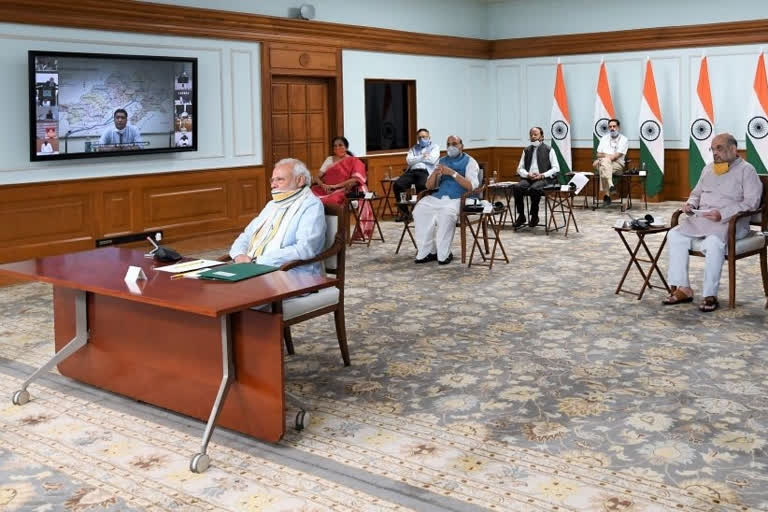New Delhi: In what must easily rank among the most difficult and vital of meetings in their entire political careers, Prime Minister Narendra Modi and state chief ministers spent much of Monday afternoon and evening brainstorming during a six-hour-long video conference over the fate of the national lockdown over COVID-19 pandemic fears.
The lockdown began on March 25 and is slated to end on May 17.
PM Modi underlined the significance of any path India chose with a concise remark: “We must understand that the world has fundamentally changed post-COVID-19. Now the world will be pre-corona, post-corona just like the case of the World Wars. And this would entail significant changes in how we function.”
While the central question in the deliberation remained the fate of the lockdown—whether to lift or extend it after May 17—there were indications that there would be no blanket policy.
In the geographical spectrum, at one extreme there would be zones with a substantial easing of curbs on economic activities while at the other there would be rules that are still enforced in containment zones. The prime concern was two-pronged as it were—to kick-start the economy that is currently in doldrums, and to prevent further spread of the contagion especially to India’s rural swaths.
The PM said: “We have a twofold challenge—to reduce the transmission rate of the disease, and to increase public activity gradually while adhering to all the guidelines, and we will have to work towards achieving both these objectives.”
Notably, rural India faces the increasing dangers of a spread of infections due to the returning migrant workers who, deprived of the ‘economic security’ of the urban hubs, have decided to trudge back to the ‘social comfort and security’ of their native places.
News agency PTI reported that PM Modi pointed out to the CMs the need to chalk out a comprehensive roadmap, “with a focus on strengthening the COVID-19 containment strategy and stepping up of economic activity in a calibrated manner as the 54-day nationwide lockdown nears an end.”
Outlining the vital importance of the deliberation, the PM told the CMs that the country’s future depended on what suggestions they had to make and accordingly underlined the need for a “balanced strategy”, one that seeks to contain the pandemic yet allow economic activity.
The states fell into three categories—some favouring lifting of the curbs, many opposing it, while some allowing for qualified curbs and relaxations.
Several highlights still stood out in the deliberations.
States needed more money and resources to fight the pandemic even as the Centre’s state of finances is nothing to cheer. If the pre-pandemic economy of the country was exhibiting damped prospects, the pandemic and the consequent lockdown have only taken the economy on the road to near devastation.
Many states like Kerala sought dilution of central norms seeking more control over the measures to fight the pandemic—in other words, asking the Centre not to ‘micro-manage’—while Punjab CM Amarinder Singh wanted the lockdown to continue with a ‘carefully crafted exit strategy’ in place.
Nor was the ‘deliberation and consultation’ process to be seen as a strengthening of the federal process because it only underlined the central control over the purse-strings.
If Maharashtra CM Uddhav Thackeray wanted a ‘specific and concretely directed’ lockdown, Tamil Nadu CM K Palaniswami opposed the resumption of flight and passenger train services till May 31.
Besides the PM and the CMs, Defence Minister Rajnath Singh, Home Minister Amit Shah, Finance Minister Nirmala Sitharaman and Health Minister Harsh Vardhan were in attendance.
The next interaction will be before Friday when the CMs submit respective ‘blueprints’ to the PM detailing a broad plan to deal with the lockdown regime as well as on various “nuances during and after the gradual easing of the lockdown”.
(With PTI inputs)
Also Read: select-train-services-resume-from-tomorrow-railways-issues-time-table-till-may-20



